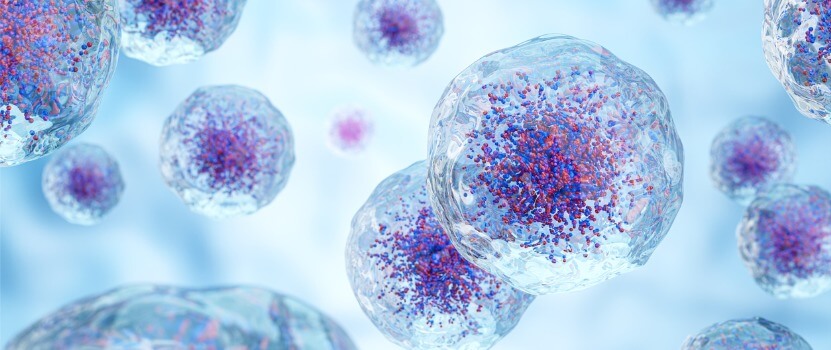As medical science continues to advance and new treatments become available, safety remains a top concern for patients. While stem cell therapy promises exciting results for a wide range of conditions, like any newer treatment, people have questions about its safety and effectiveness.
This guide gives an overview of the safety of stem cell therapy, answers basic questions about stem cells, and explains how different approaches to stem cell therapy can impact results.
Dr. Bill Johnson and the Innovations Medical Stem Cell Center are leaders in this exciting field and have safely performed stem cell treatments in North Texas since 2013. Together with the Cell Surgical Network, we have performed more than 12,000 treatments and are proud to be the first Cell Surgical member in the region.
Stem Cell Therapy and Safety
Although research and development are ongoing, stem cell therapy is generally safe, as long as it is performed by an experienced medical team using proven techniques. The type of stem cells used also has an effect on safety. For example, adult stem cells harvested from a patient’s own fat are generally considered to be safer, with multiple studies supporting their safety.
At Innovations Medical, we exclusively use adult stem cells harvested from a patient’s own fat, known as autologous stem cells.
Stem Cell Therapy Side Effects
As with any medical procedure, stem cell therapy carries some risk of complications and side effects. These risks largely depend on the types of stem cells used, the method of delivery, and the overall health of the patient.
While adult stem cells harvested from a patient’s own fat are considered safer, there is a rare risk of infection, bleeding, or other complications. Side effects can include temporary pain and discomfort at the treatment site, and rarely nausea, headaches, and changes in blood pressure. To lower your risk of side effects, work with an experienced and reputable stem cell practitioner who performs thorough patient medical screenings to ensure you are an appropriate candidate for this type of treatment.
Stem Cells Explained
Stem cells are cells that have the unique property of being able to differentiate into other types of cells. This can include muscular or connective tissue cells, nervous cells, blood cells, or a range of other cell types. Stem cells are found in many locations throughout the body, including bone marrow, blood, and fat tissue.
There are two primary types of stem cells: embryonic stem cells and adult stem cells. Embryonic stem cells are derived from embryos, while adult stem cells are found in various tissues in the body and are involved in tissue repair and regeneration. Autologous stem cell procedures always use adult stem cells harvested from a patient’s own body.
Can The Body Reject Stem Cells?
When stem cells are taken from the patient’s own body, there is no risk of rejection. This is because the immune system recognizes them as self.
There is still a very small possibility for the body to reject stem cells even in an autologous procedure. Rejection can only happen if the stem cells are contaminated or damaged during collection, processing, or storage — which is why an experienced and reputable provider is so important.
Different Types of Stem Cell Therapy
Autologous stem cell therapy can be used in a wide range of applications including:
- Musculoskeletal conditions and injuries for muscle and joint repair
- Neurological disorders
- Autoimmune diseases
- Heart and vascular diseases
- Urologic dysfunction and surgery
- Lung disease
- Eye diseases
When Do You See Results from Stem Cell Procedures?
Results from cell therapy depend on the type of procedure, the condition and severity, and individual patient response. Some patients can see results within a few days to weeks of stem cell therapy, particularly with joint injuries or osteoarthritis. Pain relief and increased mobility may be noticeable within a few days to weeks of the procedure.
In other cases, stem cell therapy results can take several months to become noticeable. This is particularly true for heart disease or neurologic conditions, which require more extensive tissue regeneration.
The length of results also depends on the specific procedure and condition being treated. Some stem cell therapies, such as bone marrow transplants, are longer term to permanent, while stem cell therapy for musculoskeletal conditions and injuries may require additional treatments to maintain results.
Is Stem Cell Therapy FDA Approved?
The stem cell procedures that have been approved by the Food and Drug Administration (FDA) are mainly designed to promote healthy blood cell development in patients with conditions such as sickle cell disease or leukemia.
Because many of the procedures used to harvest and replace a patient’s own stem cells are considered surgery, and the FDA does not have responsibility for approving surgery, FDA approval is something of a non-issue in these cases. Above all, it is critical to find an experienced and trustworthy provider who will answer your safety concerns and who has a proven record of results in stem cell therapy.
Contact Innovations Medical to Learn More About Stem Cell Therapy
If you’re looking to improve your appearance, manage pain, or treat a chronic illness, Innovations Medical is here for you. Our skilled professionals help you decide which treatment is best for you – keeping you informed and confident in the next steps. We’ve been helping our patients look and feel their best since 2005, and even our most advanced procedures are often minimally invasive.
To find out if stem cell therapy may be right for you and to learn how Innovations Medical can improve your life, call us at (214) 643-8665 or schedule an appointment.

